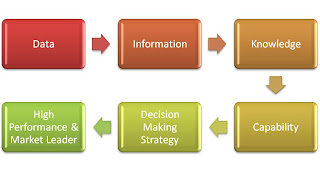Manage the Knowledge
1. ‘Analytics’ On
Artificial Intelligence
2. Brimming’
Big Data’ & ‘Balanced Scorecard’
3. Crunching
‘Capability Maturity Model’ & Co-Creation
4. Dreadful
‘Draconian’ Measures
5. Eccentric
‘Execution’
6. Flabbergasted 'Future
Of Work'
7. Grudging
‘Ground Rules’
8. Hunting
& Haunting ‘Histogram’
9. Informal
‘Innovations’
10. Jettisoned
Jargons Of ‘Jboss’
11. Kama on ‘Kano
Model’ & ‘Kansei Engineering’
12. Love ‘Lean’
13. Mesmerizing
‘Management’ Metaphors
14. Nagging &
Nudging ‘New Initiatives’ And ‘Non-Linear’ Models
15. ‘Organic’
Organizations And ‘Operations’
16. Plasmic
‘Protocols’
17. Quenching
‘Quality’
18. Rapid
‘Revenue Recognition’
19. Stakeholder
‘Stigma’ And Strategic ‘Six Sigma’
20. Titans Of
‘Testing’
21. Uncertain
‘Unique Selling Proposition’
22. Viral ‘Value
Chain’
23. Windows For
‘Web’
24. ‘X-Factor’
Xtremes
25. ‘Yield
Management’ Yippee
26. ‘Zero
Defects’ Zeal
These are few of the
terms that whisper in our ears very often nowadays. What makes executives to
think and take actions against these terms? May be because these factors create
volatility in the market or help to thrive in the imbalanced world. Acting,
Re-acting and Managing these terms have become a mandate for the masters of
management.
The Growth of
organizations!
Organization grows,
when artifacts expand,
Artifacts expand, when
capabilities get stronger,
Capabilities get
stronger, when knowledge is enriched,
Knowledge is enriched,
when information is passed,
Information is passed,
when data is present,
Data is present, when
people put efforts, emotions, energy and excellence in work which are the by
product of lessons learnt and fingers burnt!
In order to
differentiate ‘also ran’ and ‘market leader’, organizations have to manage the
knowledge. For this, Many organizations start setting up the KM community
today. Even though the knowledge management is a recent term but the
practice is millennial years old. .i.e. we have been told the history of our
ancestors through tales, rights and rituals. E.g. Arthasastra, Bible, Quran,
Mahabharata, Ramayana and Greek narratives too. Now, the question raises, Why
it is been archived and shared? Because, lessons learnt and fingers burnt will
help you to ‘connect the dots’. i.e.
So, it was,
So, it is,
So, it will be!!!
The Frame work!
The frame work for
managing the knowledge is a 5 step process.
1. Collate
2. Design
3. Store
& Maintain
4. Exploit
5. Develop
Collate
Collection of data,
information, templates, reports and etc from various sources play a pivotal
role in setting up a KM community. Without a structured format of data
collection method, value addition through KM community will not be effective.
Design
The design of KM
portal, should be more user friendly and intuitive. The User interface or front
end of any community will make it attractive. Nevertheless, the back end should
have robustness. The portal must act as ‘one stop’ shop for organizational
decision making.
Store & Maintain
Organization or the KM
management team must decide what contents have to be shared in KM area. This
includes IP, Analysts reports, balance sheet, templates, lessons learnt, best
practices and etc.,
Exploit
A ‘One stop’ shop for
all the organizational needs lives at the core of KM. It must be made available
24x7 to all the employees. At the end of the day, people are the ones who are
going to make the organization succeed.
Develop
Developing the KM to
the changing trends and needs of the organization and industry must be done
continuously for effective and efficient usage.


Comments
Post a Comment